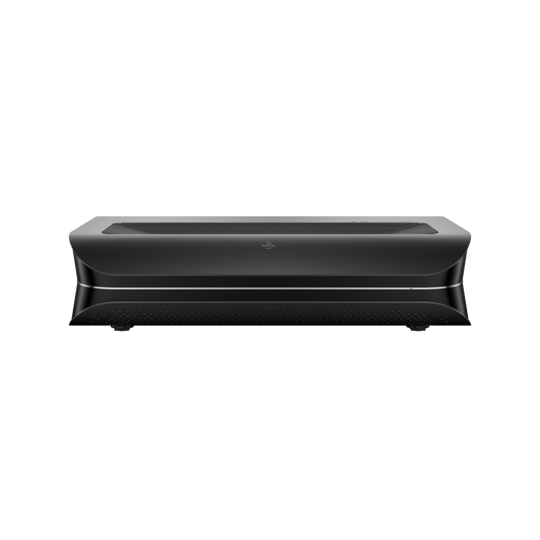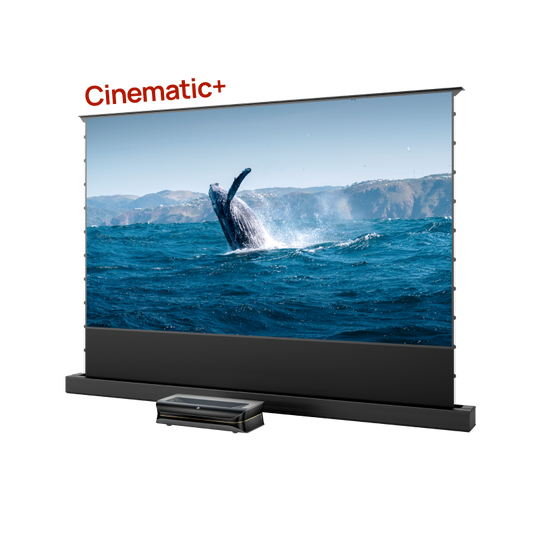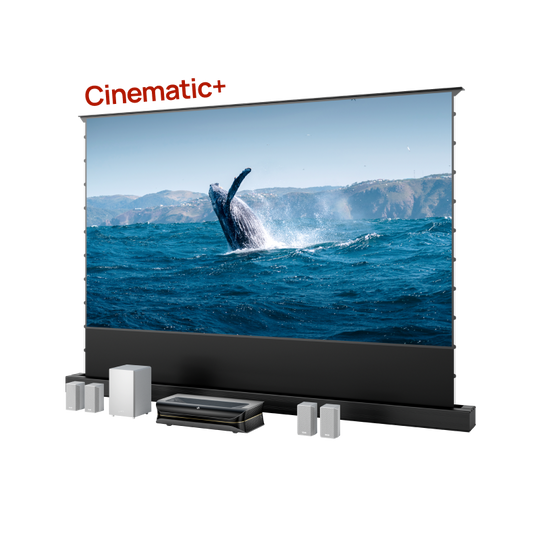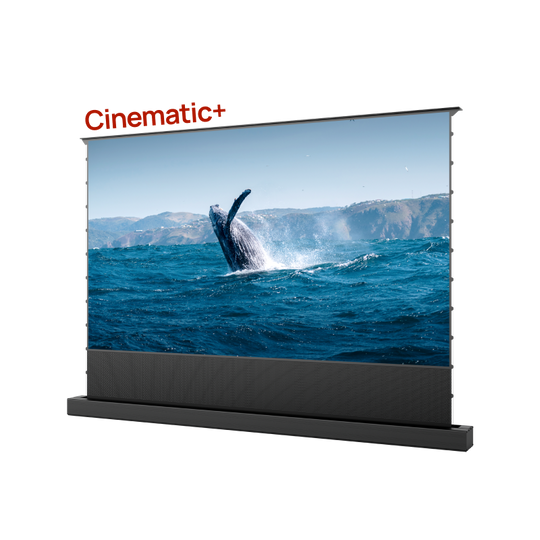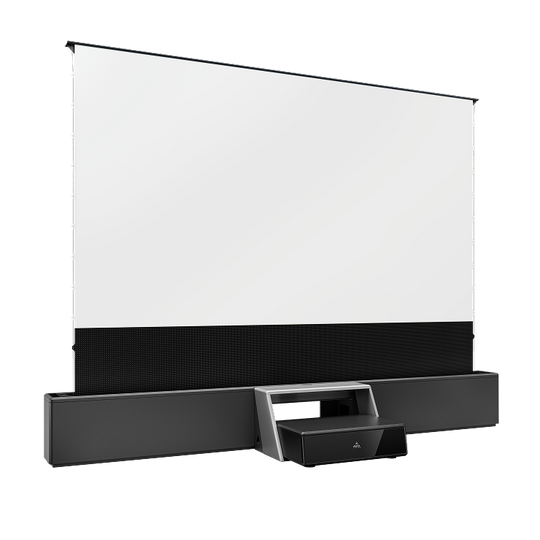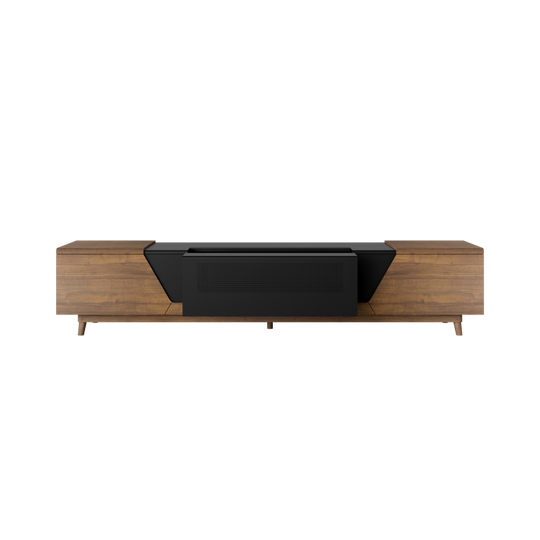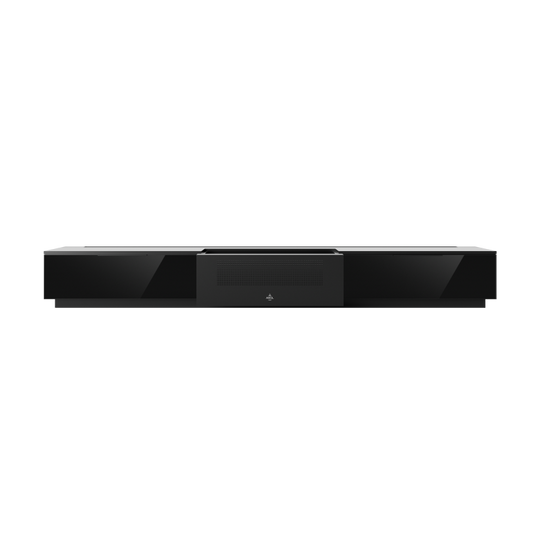Whether for home theaters or outdoor gaming sessions, installing a projector screen can make a difference. You need to learn how to install a projector screen to get the best out of the projector. Let's get started!
Understanding Different Types of Projector Screens
Before setting up the projector screen, get to know the various projector screen types and their uses.
1. Floor-Rising Projector Screen:
A floor-rising screen is lighter and much faster to retract. Designed to be on a floor riser, there is no need for assembly. They are most suitable in small rooms with limited wall space or where no wall fixings are required.

2. Inflatable Movie Screen:
Inflatable screens are ideally large and stationed very high from the ground, making them perfect for outdoor cinemas, sports festivals, public events, or drive-in theaters. The frame is filled with a high-pressure air blower.
3. Roll-Up Projector Screen:
A roll-up projector screen can be rolled up and stored once the projector is no longer in use. It is space-saving and can be carried around, making it perfect for temporary or mobile presentations.
4. Fixed Frame Projector Screen:
Fixed frame screens are permanently installed and are functional in areas where screens are not shifted, like 4K projections in home theaters. They can be directly mounted on a wall surface or within a frame.
Choosing the Right Location
Factors to consider for optimal screen placement include:
- Ambient Light: For outdoor venues or areas with ambient lighting, increase the brightness and sharpness or get a projector with higher lumens.
- Viewing Angles: Set your projector at the right height to display the image without distortion and ensure comfortable viewing. Mount it on the ceiling or elevate it to a heightened surface.
- Screen Size and Distance: Calculate the throw ratio (distance/image width) and screen size according to the recommended seating or lighting.
- Room Size: For large home theaters, a floor-rising screen offers flexibility and easy storage. In smaller rooms, opt for a wall-mounted screen to save space and ensure a clean, permanent setup.
Setting up Your Projector Screen
Here are step-by-step setup instructions for different screen types:
1. Floor-Rising Projector Screen
- Place the feet on the screen. Rotate the feet of the tripod so that they are standing perpendicular to the projector screen.
- Lift the screen and slot the regulating rod into the right hole.
- Modify the holes. The white hole controls the brightness of the screen, while the yellow hole controls the height.
- Rotate the regulation rod clockwise or anti-clockwise to raise and lower the screen height.
- Ensure that screen tension is within check when you are at the maximum screen height.
2. Inflatable Movie Screen
- Spread the screen on a flat, leveled surface. Fasten the air blower to the sleeve and tie the pull strings around the nozzle.
- Position the projector and DVD player roughly 25' away from where the screen is to be located. Plug the power cord into the surge protector.
- Move the strap sliders and begin blowing. One more person will be required to lift the screen.
- Plug the right and left speakers into the power strip and the cord.
- Connect the HDMI cables to the DVD player and projector. Secure the mount.
3. Roll-Up Projector Screen
- Check if the wall can support the screen case's load. Measure the distance between the mounting points.
- Raise the screen and lock it firmly into position. Then, raise or lower the screen carefully.
- Mount the brackets and fasten the rails using screws. Fix the hook of the case clamp.
- Adjust the screen and fasten the screws on each of the brackets.
4. Fixed Frame Projector Screen
- Select the wall with no direct light and determine screen height. The distance of the screen bottom to the floor is recommended to be 24-36 inches.
- Start fixing the screen on the frame by pulling up the screen and using the correct screws as recommended in the manual to secure the screen on the frame.
- Screw the mounting brackets to the wall on the marked point using anchor screws.
- Bolt the projector onto the wall and tighten up the screws as needed.
- Adjust the screen tension by unscrewing the end caps from the case.
Fine-Tuning Your Setup
It is necessary to adjust the room's lighting conditions. If you do most of your viewing in a dark environment, calibrate the projector in a dark atmosphere.
Here are a few tips for achieving the best image quality:
- Projector Alignment: Place the projector directly above the screen. Once the correct aspect ratio is set, adjust its position to fit the image perfectly on the screen.
- Focus and Zoom: Rotate the focus ring on the projector until the image is clear and well-defined. Use optical zoom or check the sharpness setting.
- Calibrating Image Quality: Brightness and contrast patterns can be calibrated using a specific disc or built-in functions. Adjust color temperature, saturation, and movie mode for fine-tuning.
Projector Screen Recommendation
When choosing a projector screen, consider the room's lighting conditions. For rooms with low light, such as living rooms or bedrooms, the Cinematic ALR Screen is ideal. This screen is designed to eliminate overhead lighting and has a micro-cirriform optical pattern that blocks up to 95% of ceiling light, improving picture quality in low-light environments, perfect for night movies.
If the room has a lot of light coming from windows or other sources, the Daylight Fresnel ALR Screen is a better choice. This screen shields the TV from both overhead and side lighting, offering high contrast and brightness even in well-lit environments, making it perfect for viewing in the afternoon or evening.
Maintenance and Care
- Cleaning: Use a microfiber cloth and a mild solution to gently clean the screen. Avoid abrasive chemicals and clean regularly to prevent dust buildup and scratches.
- Protection: Cover the screen with a dust cover or plastic bag when not in use to prevent damage.
- Tension Adjustment: Keep the screen taut and wrinkle-free to get the flattest image possible.
Conclusion
Don't let your investment go to waste, and follow the above vital points for projector screen setup. Enhance your viewing experience by calibrating settings for accurate color and sharp focus. Seek technical professional help for advanced settings and installation.


